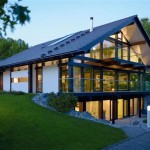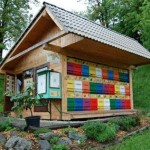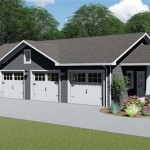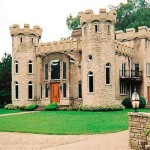Essential Considerations for Green Home Design Floor Plans
As global awareness of environmental concerns grows, incorporating sustainable practices into home design becomes increasingly crucial. Green home designs go beyond aesthetics, offering numerous benefits for homeowners and the planet. Understanding the essential aspects of green home design floor plans is key to creating a sustainable, healthy, and energy-efficient living space.
Maximizing Natural Lighting
Natural light provides significant benefits, not just for ambiance but also for well-being and energy consumption. Green home design incorporates large windows, skylights, and strategically placed openings to maximize sunlight exposure throughout the day. It helps reduce reliance on artificial lighting, cutting energy costs and promoting occupants' physical and mental health.
Utilizing Passive Solar Design
Passive solar design uses natural elements to heat and cool a home. Floor plans with south-facing windows capture solar energy in winter, while overhangs block excessive heat in summer. Properly designed thermal mass, such as concrete or brick, absorbs heat and releases it slowly, maintaining a comfortable indoor temperature with reduced energy consumption.
Promoting Cross-Ventilation
Cross-ventilation improves air quality and reduces energy use. Green home designs incorporate windows and openings on opposite sides of a room or building to facilitate airflow. This natural ventilation removes stale air, promotes healthy indoor humidity levels, and minimizes the need for air conditioning or fans.
Optimizing Energy Efficiency
Floor plans should consider energy-efficient features to reduce consumption and carbon footprint. Compact designs with well-insulated walls, ceilings, and floors minimize heat loss. Energy-efficient appliances and lighting fixtures are essential, as are smart home technologies for temperature control and energy monitoring.
Sustainable Building Materials
The materials used in construction play a critical role in green home design. Sustainable materials, such as recycled steel, low-VOC paints, and sustainably sourced wood, promote health and reduce environmental impact. Using local or regional materials further minimizes the energy and emissions associated with transportation.
Water Conservation
Water conservation is an integral aspect of green home design. Floor plans that incorporate water-efficient fixtures, rainwater collection systems, and low-maintenance landscaping reduce water consumption and preserve natural resources. Dual-flush toilets, low-flow showerheads, and native plants are valuable water-saving measures.
Conclusion
Incorporating these essential aspects into green home design floor plans creates sustainable and healthy living spaces. By maximizing natural light, utilizing passive solar design, promoting cross-ventilation, optimizing energy efficiency, choosing sustainable building materials, and practicing water conservation, homeowners can reduce their environmental impact, lower energy costs, and enhance their well-being.

Eco Friendly Home Plans House Design

30 Green Home Floor Plans Ideas House Modern Style Design

Green Home Design Plans And Concepts Bend Or Sunterra Homes

Green Concept Home Modus V Studio Architects Archdaily

Eco Ranch Plan

Danish Smart House Prefab Inhabitat Green Design Innovation Architecture Building

The Harper Offers Very Best In Energy Efficient Home Design From Green Homes Take A Look At Double House Floor Plans

6 Stylish Modern House Design Floor Plans Benefits
This Entirely Customizable Dwelling Unit Raises The Bar In Energy Efficient Green Home Market Place Plans By Leap Adaptive

21 Green Homes Energy Efficient Home Designs Ideas House Plans Design








